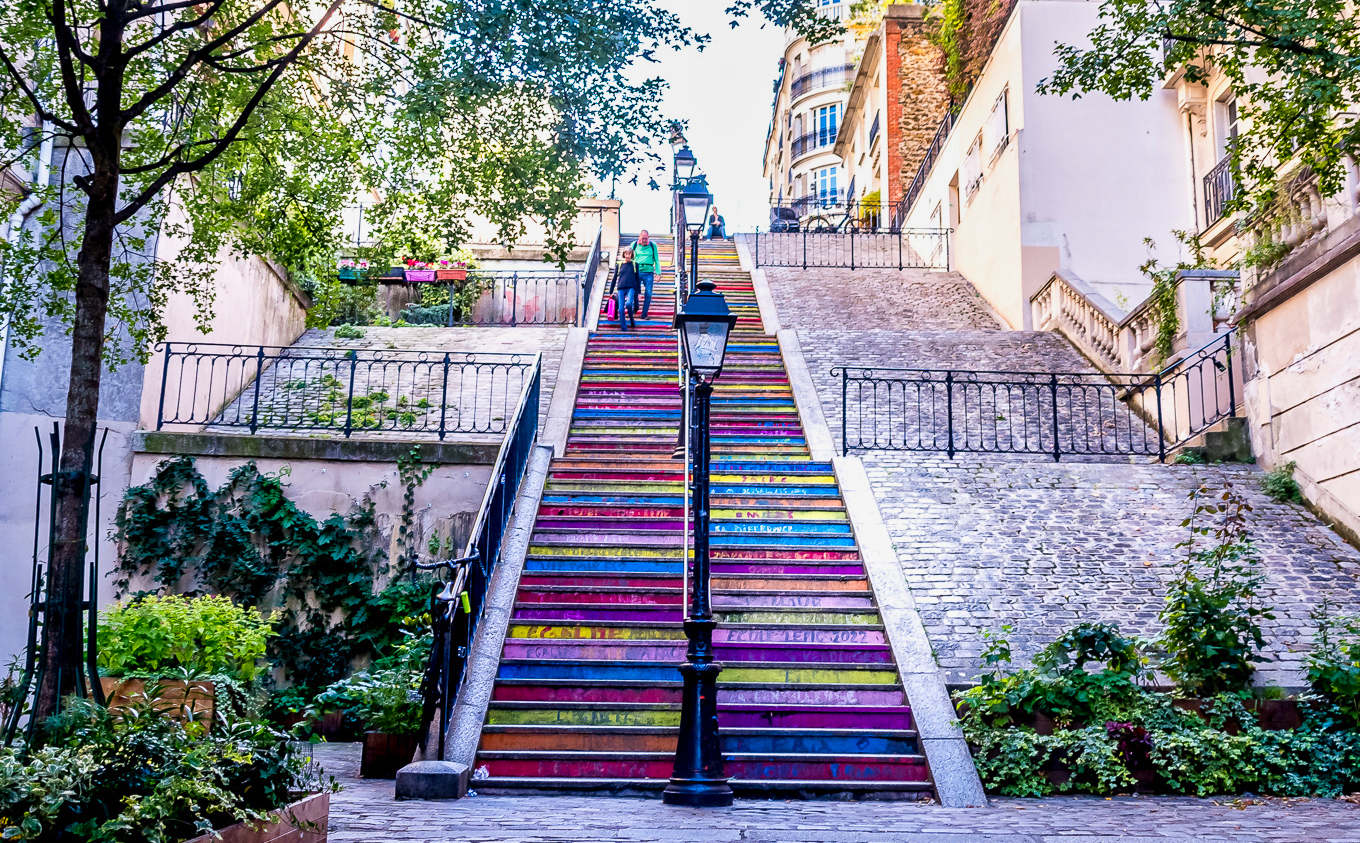
Montmartre, the hill on the northern side of Paris, doesn’t have to make much effort to attract visitors since it’s a tourist mecca for sightseers to Sacré Coeur Basilica, the view over the city, and the cafés, restaurants and portraitists on Place des Tertre. Nevertheless, in early autumn, during the Montmartre Harvest Festival, the district pulls out all the stops to present itself as something more: an urban village, a charitable “republic,” a “free commune,” and much else.
Harvest Festival? Yes, there’s a vineyard here. It’s a nod to the centuries when the village of Montmartre overlooked fields and vineyards to the north of the capital. Yet the festival, held over five days leading up to and including the second weekend in October, celebrates far more than grapes and even more that Montmartre itself. It’s a colorful, get silly, raise a glass, fun for the whole family, express your individuality, honor community, share in the joie de vivre district-wide celebration of the 18th arrondissement.
Ava Kabouchy, an American photographer and travel writer living in Perpignan, “rose” to the capital to drink in the pleasures of this year’s festival and capture its colors for this photo reportage for France Revisited.
Photo above and at top of page. One week prior to the festival, children in schools of the 18th arrondissement, supervised by their art teachers, along with the French artist known as OJAN, painted stairs to the top of Montmartre to announce the year’s theme: egalité (equality).
Having climbed the stairs with an upward view to Sacré Coeur, the Basilica of the Sacred Heart, which looms over Montmartre like the top of a wedding cake, visitors crowd along the steps to take in the view of the city below.
Entrance to Clos Montmartre, the vineyard at the origin of the celebration. The Clos Montmartre (a clos is a walled vineyard) was created in 1933 on the steep northern slope of Montmartre to stem the disappearance of green space in the area. The fields and vineyards that once dominated the landscape had all but disappeared since the city’s annexation of the village of Montmartre in 1860 and the urban developments that followed. To preserve the space from building, this parcel at the corners of Rue Saint-Vincent and Rue des Saules was planted with vines.
The annual harvest festivities began one year later, in 1934. This photo is from the festival of 1939 (Wikipedia Commons). France was at war at the time, a “drôle de guerre” (phony war) indeed, but for just a few more months.
Clos Montmartre now contains about 1700 vines, with 30 different grape varieties present. The wines are blended in the basement of the District Hall of the 18th arrondissement. The vineyard belongs to the City of Paris and is managed by the local non-profit Comité des Fêtes et d’Actions Sociales de Montmartre (or du 18ième arrondissement de Paris). All proceeds are donated to local charities providing assistance to children and the elderly.
Clos Montmartre produces red and rosé wines. During the festival they can be bought by the glass (7.50€). Bottles—the current vintage is sold in 50 cl bottles at €30 for the rosé and €35 for the red—are available at the Musée de Montmartre, which overlooks the vineyard at 12 rue Cortot, and online here for delivery in France. But when first released, the price is limited only by participants’ generosity at the invitation-only auction that’s organized by the Comité des Fêtes in October. Jean-Manuel Gabert, left, historian and lecturer, recounts the history of Montmartre and its vineyard.
Dozens of musical, artistic, theatrical, culinary, wine and costume events, large and small, take place over the course of the 5-day Harvest Festival. There are concerts, street theater, a tasting trail of food and drink, a ceremony where couples come together to say “non” to marriage, brass bands, a Freddie Mercury look-alike concert, and much more more. One of the major events is the Grande Défilé, the Grand Parade, when more than fifty groups show off their finest attire. Among them is the La Confrérie des Chapeaux Fous, The Brotherhood of Crazy Hats.
Sisterhood, too, of course. As well as childhood.
Samantha Quentin, left, the Ambassador of Paris 2022, and her glamorous companions. Samantha was also chosen as Miss Cinema for the Cannes Film Festival this year. Celya Vlieghe, fourth on line, is this year’s Miss Songeons (Songeons is a village in the department of Oise). On the right is Ava Wlady, Miss Montmartre 2022.
Members of the Jardins Familiaux de Stains, the Family Gardens of Stains display communally grown produce and flowers. Stains is a northern suburb of Paris.
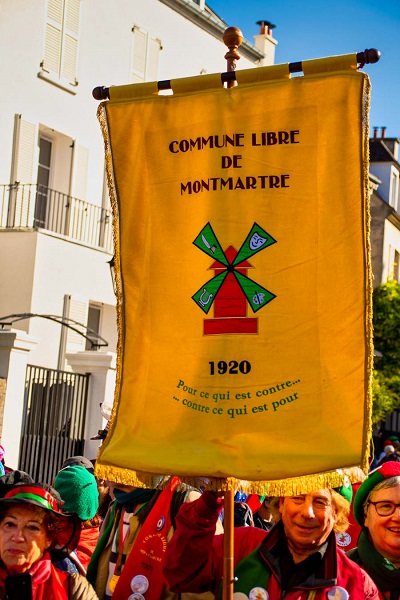 During the 1920s, as the uncontrolled development of the industrial revolution was taking place along with the loss of farmland and rural life, two architects, Eugène Gonnot and Georges Albenque, set about designing affordable housing and space for “workers’” gardens in the Paris Region. In Stains, 600 such gardens continue to thrive. They serve as cultivated spaces in a dense suburb as well as a gathering place for the community.
During the 1920s, as the uncontrolled development of the industrial revolution was taking place along with the loss of farmland and rural life, two architects, Eugène Gonnot and Georges Albenque, set about designing affordable housing and space for “workers’” gardens in the Paris Region. In Stains, 600 such gardens continue to thrive. They serve as cultivated spaces in a dense suburb as well as a gathering place for the community.
Parody, silliness and humor guide the Commune Libre de Montmartre, a non-profit association founded in 1920 by artists of Montmartre to maintain a festive, village spirit in the district. Their slogan: Pour ce qui est contre… contre ce qui est pour, For what is against… against what is for.
The Republic of Montmartre was founded in 1921 by a group of artists with less silliness in mind since its goals were and remain both cultural and charitable. Cultural in its desire to maintain and promote Montmartre traditions while keeping a wary eye toward modernism. Charitable in its support of causes benefiting disadvantaged children and others in need. Together, through culture and charity, along with a good dose of festivity, the members/citizens of the Republic of Montmartre foster a sense of community centered around solidarity, friendship and mutual assistance. The Republic’s motto: Faire le bien dans la joie! Do good in joy! The members dress in the style of Aristide Bruant, a singer at the Chat Noir, a cabaret in Montmartre frequented by Toulouse-Lautrec, who created the famous poster featuring Bruant sporting a red scarf and a black cape.
Within the festival’s theme of equality and its salute to individuality, there’s certainly place in the parade for a zebra. Meanwhile, this accordionist entertains passerby with his music and his cat.
While the Montmartre Harvest Festival naturally celebrates the wine from Clos Montmartre, the abundant wines of Beaujolais are also often associated with festivities in Montmartre. Brouilly (gamay), the largest and best-known of the 10 Beaujolais crus, is one of the wines most at home in Paris bistros and brasseries, so it’s not out of place here, as these cask-carrying fellows can attest.
Just up the street from the vineyard, La Bonne Franquette is one of Montmartre’s most noteworthy hilltop restaurants. It maintains a tradition of cheerfulness, conviviality, good bistro fare and an easy-going tour de France of wines, staying faithful to its motto Aimer, Manger, Boire & Chanter (Love, Eat, Drink and Sing), as this group of celebrants was doing during the festival. The restaurant, a gathering place for the Montmartre elite and local non-profits as well as for tourists, has belonged to the Fracheboud family since 1971. A book about the La Bonne Franquette‘s place in the history of Montmartre by Gérard Letailleur, a specialist on the history of eating and drinking establishments in Paris, has just been published in French. A la bonne franquette, by the way, is an expression used to apply to meals that are informal, unceremonious and without any fuss or pretension.
The weather may cool at night but the atmosphere heats up in one of Montmartre’s most famous cabarets, Au Lapin Agile, a hovel of a hotspot located across the street from Clos Montmartre. Presenting talent old and new, through song, literature and poetry, Au Lapin Agile keeps alive the Montmartre cabaret spirit of the late 19th and early 20th centuries.
Well after night falls, while inside Sacré Coeur the Benedictine nuns who live in the priory next door help maintain the basilica’s mission of continuous adoration of the Eucharist, the crowd outside enjoys earthly delights as they continue to gather on the steps overlooking the city of Paris.
Photos © 2022 (Ava Kabouchy with the exception of the photo from 1939). Captions by Ava Kabouchy and Gary Lee Kraut.


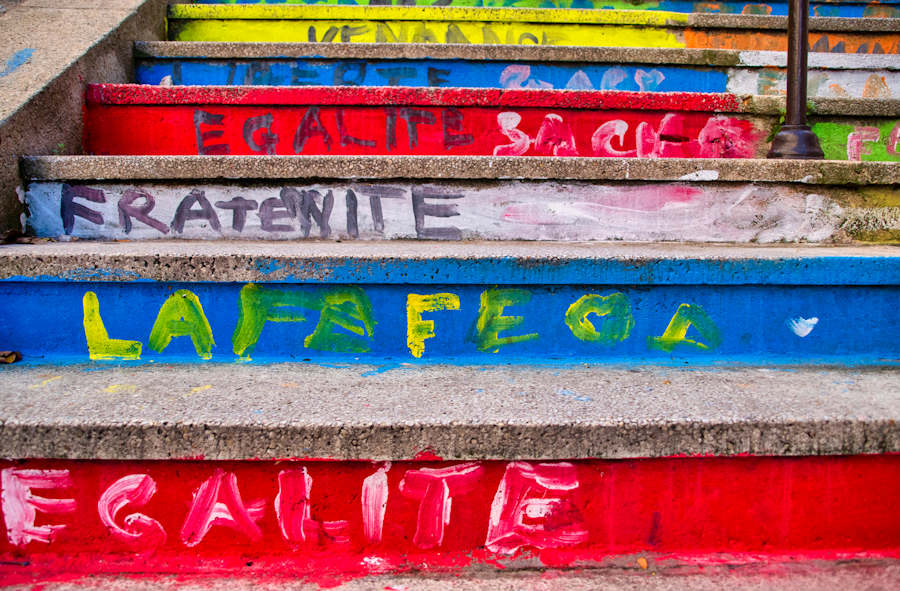
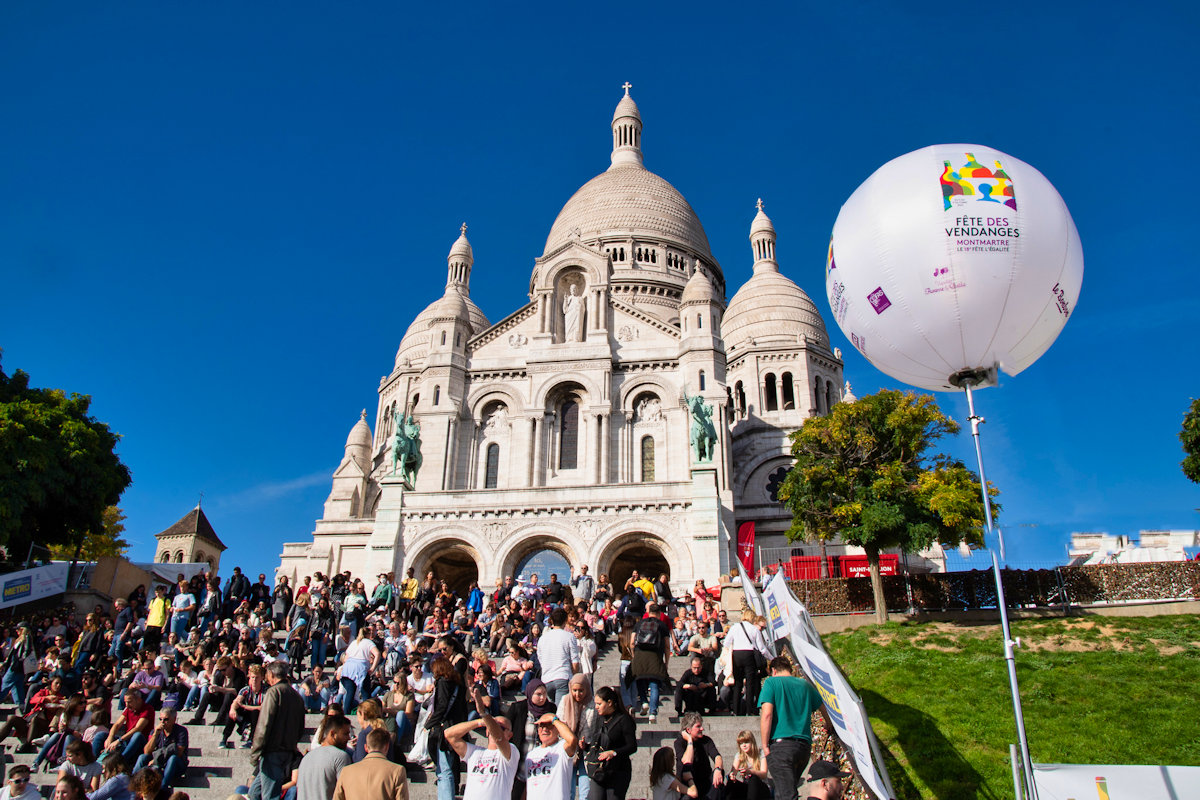
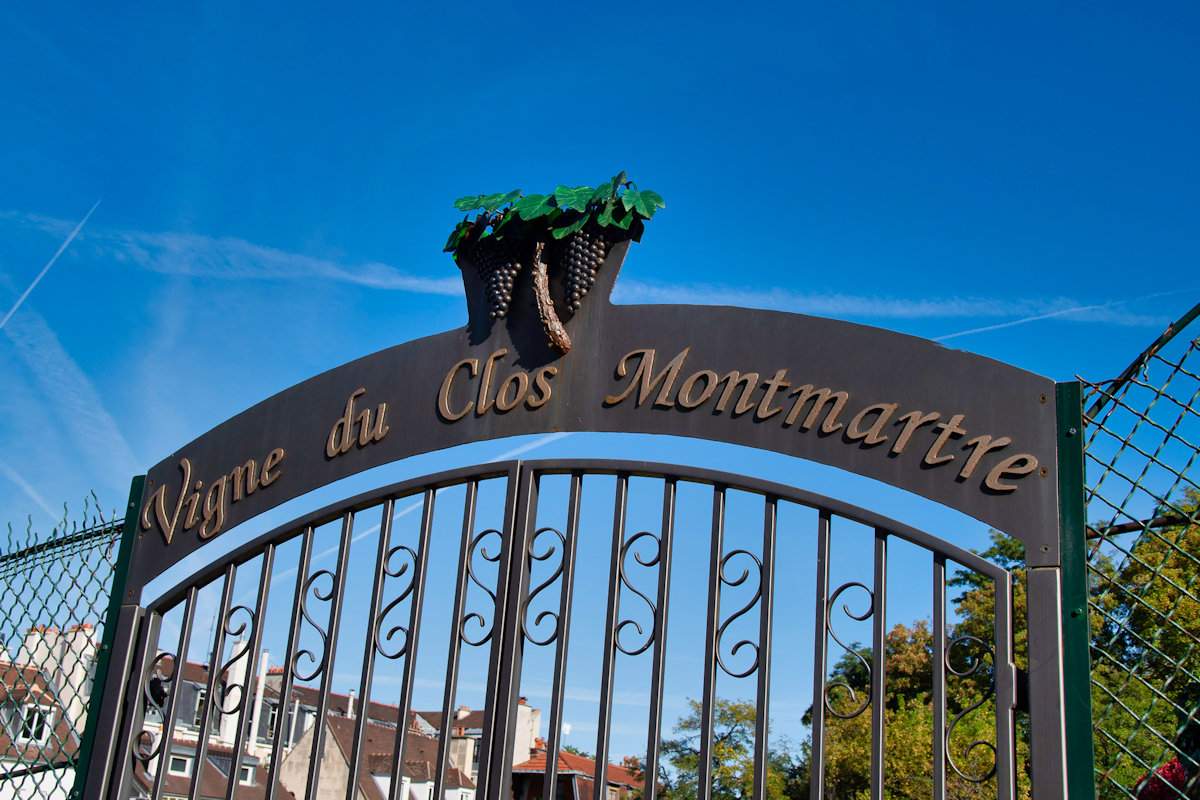

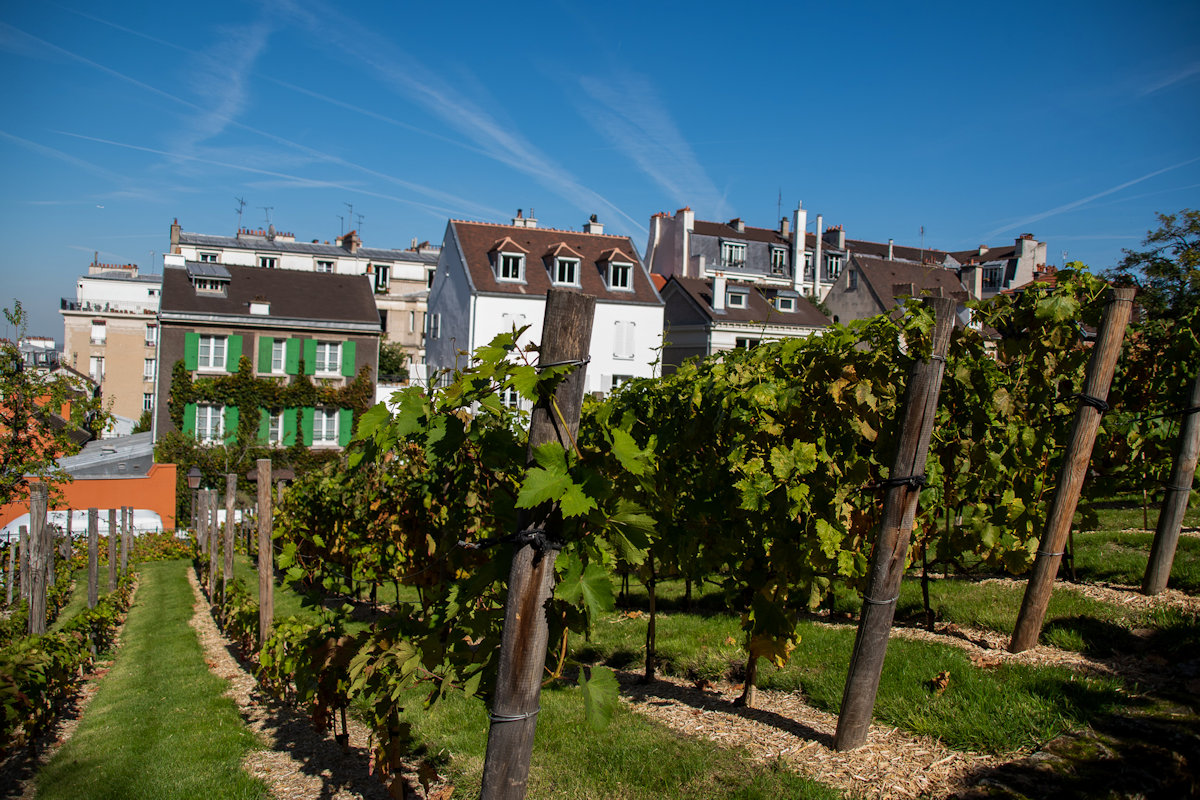
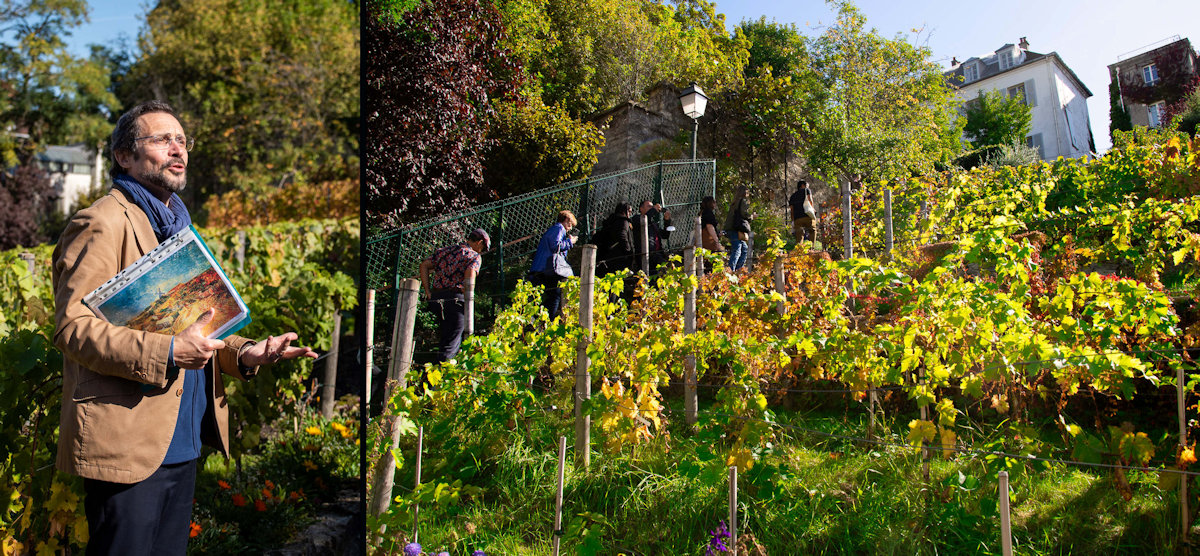
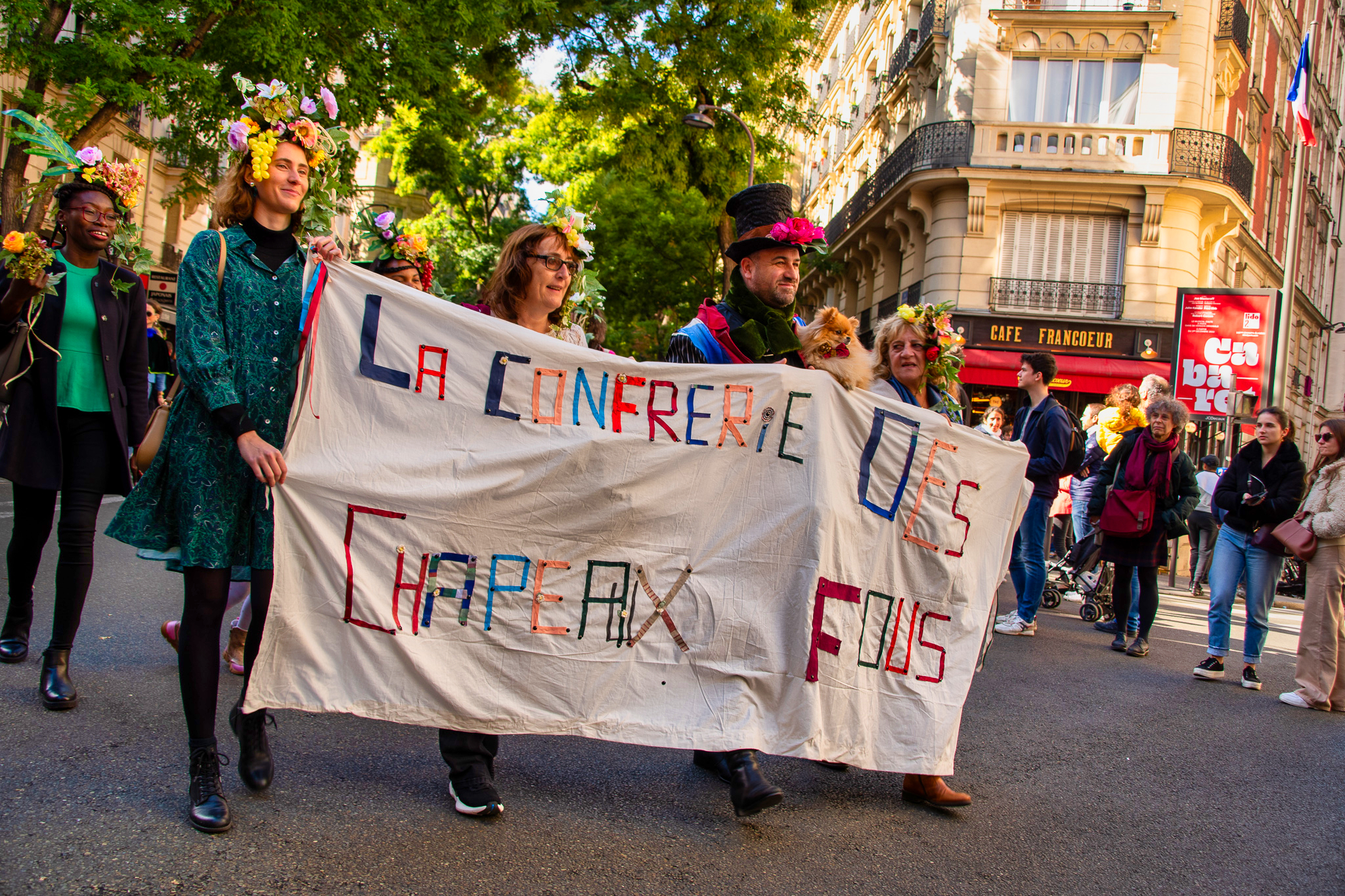
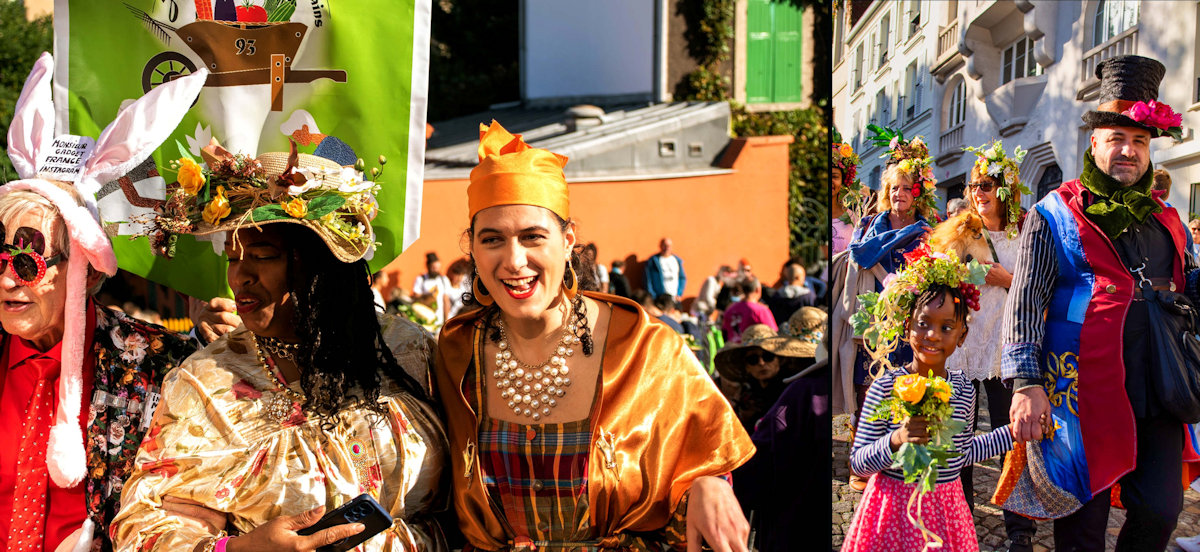

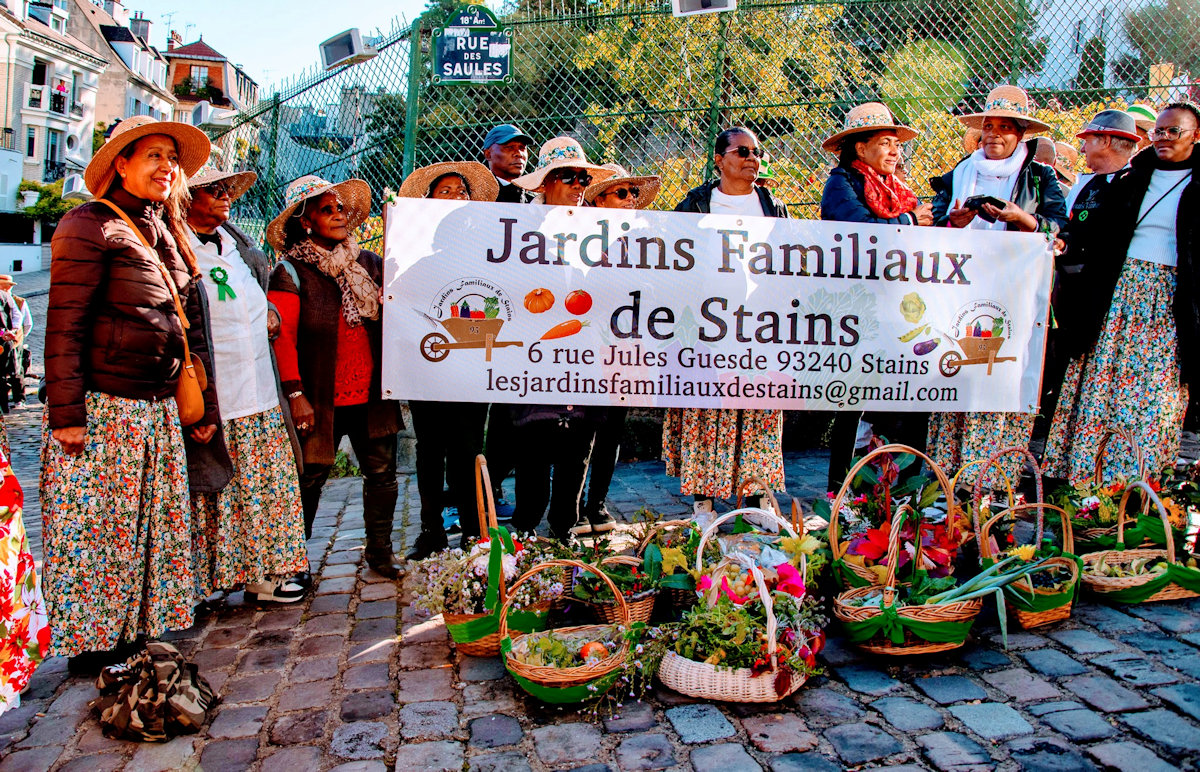
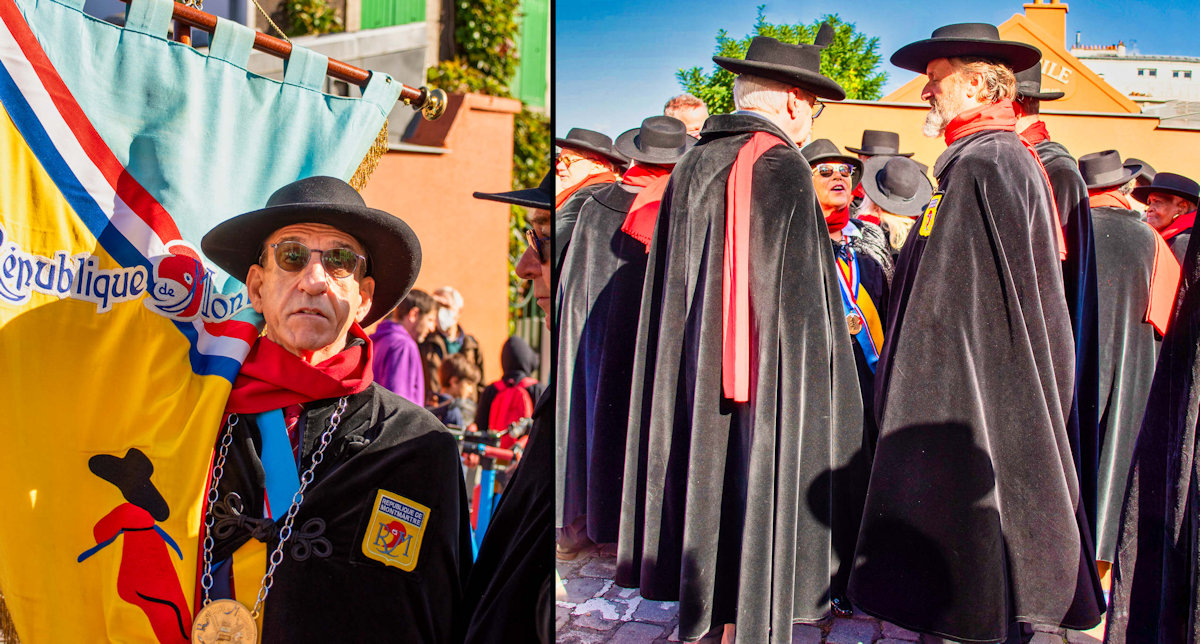

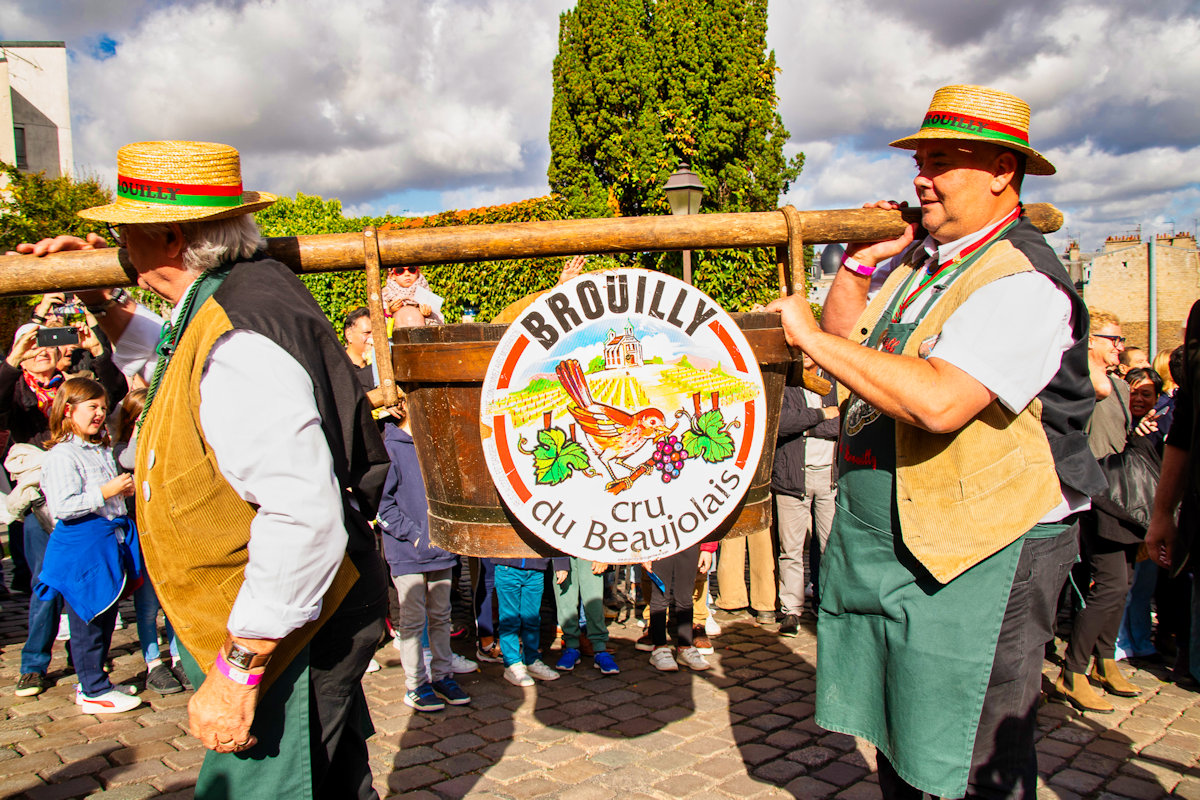
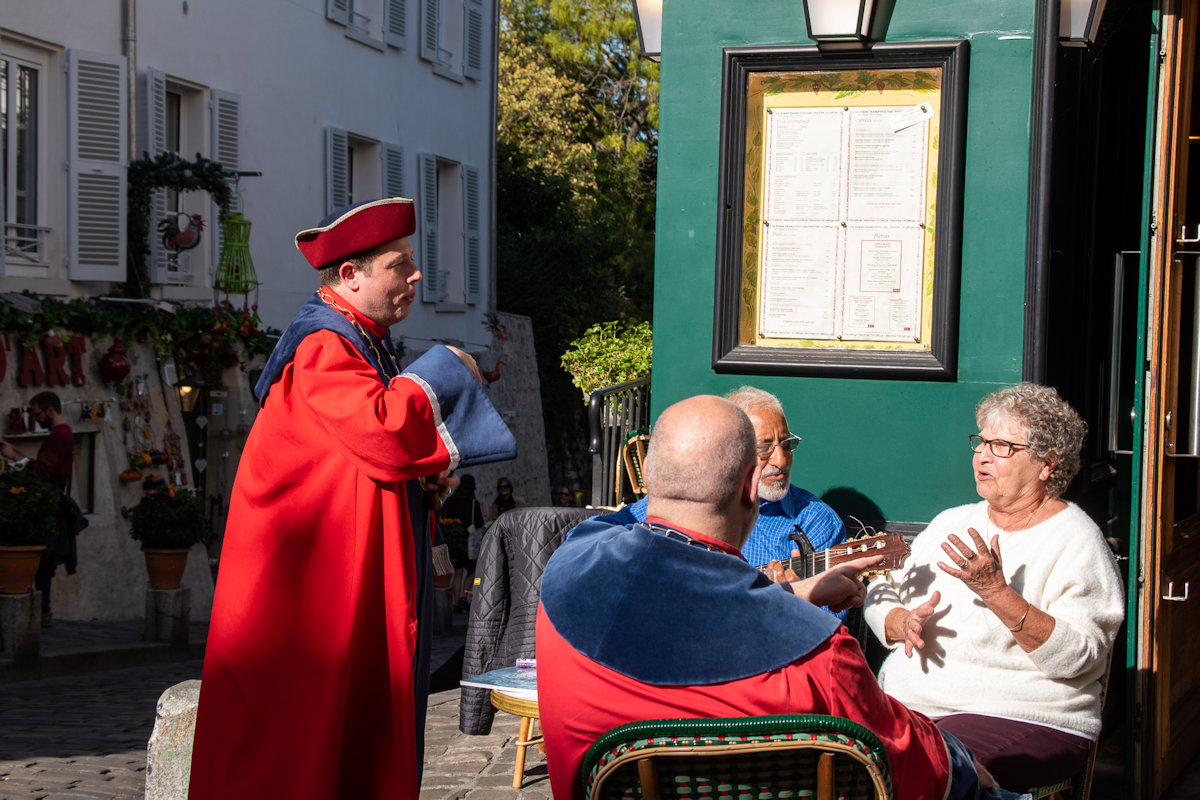
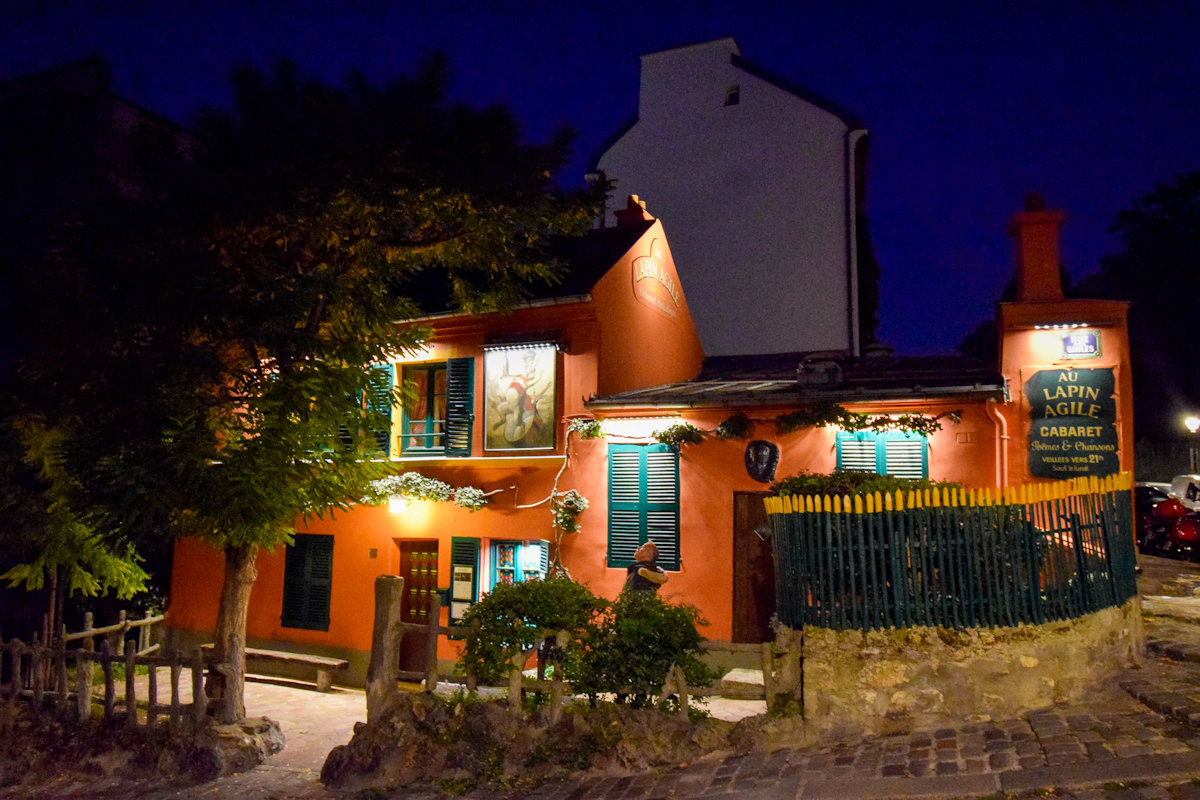
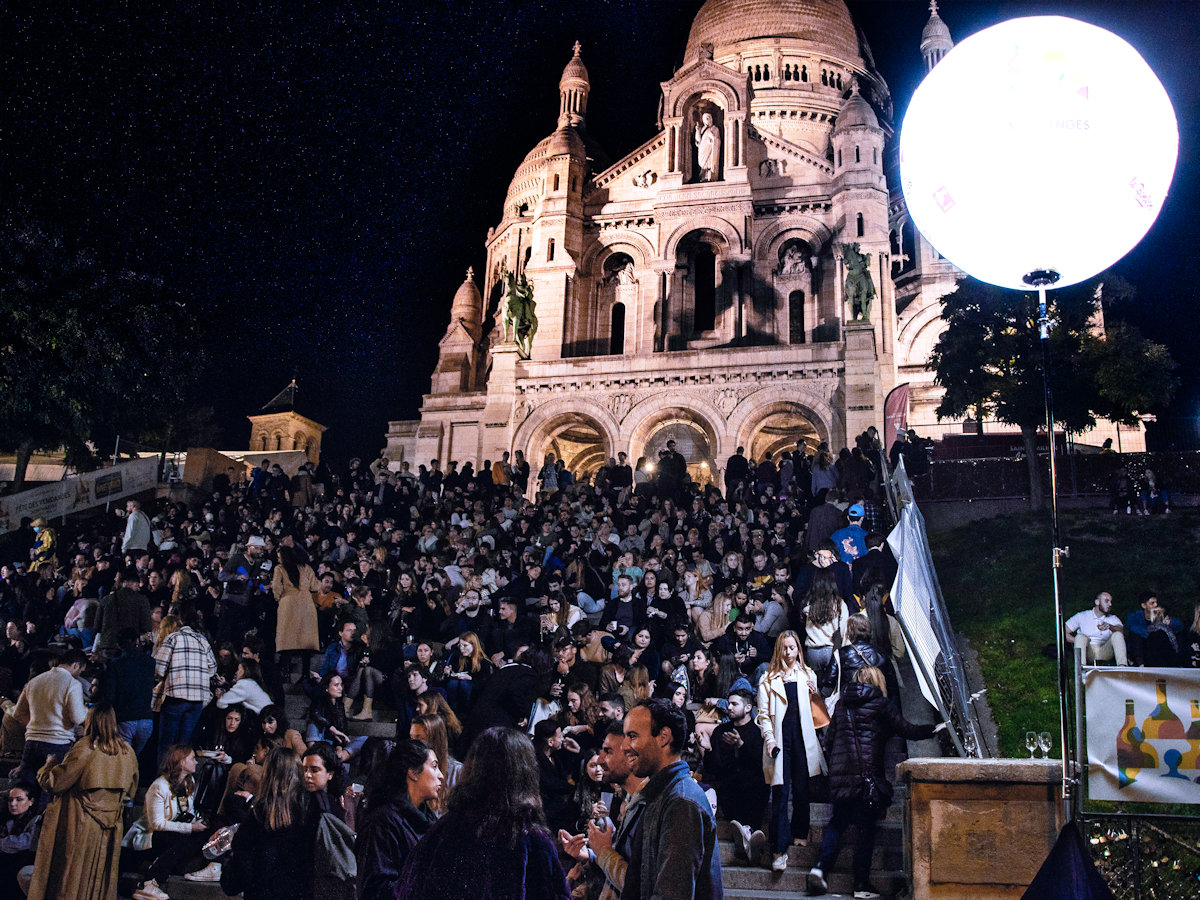
Hello Ava!
Very enjoyable and interesting report on Montmartre!
Some day I must try that Clos Montmartre wine. I was not aware of it on my visit.
Continue in good health!
Such a fun and informative report – a mille merci, Ava!